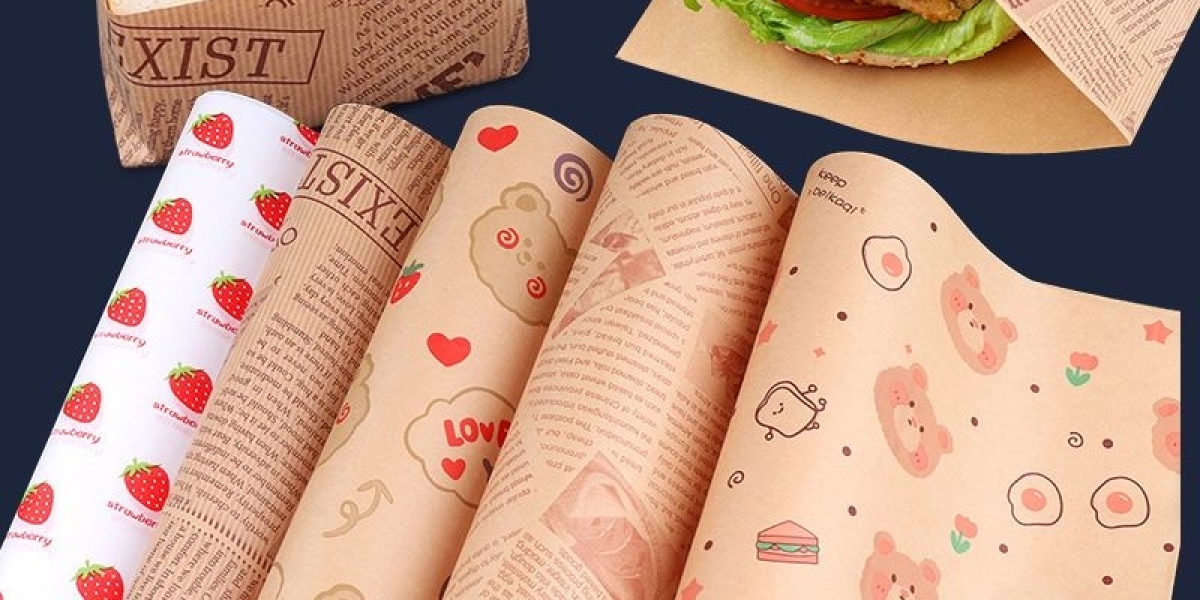When it comes to food packaging and presentation, one of the most versatile and practical solutions is deli paper. Whether you have visited a local sandwich shop, picked up burgers from a food truck, or purchased fresh meat from the butcher, you have likely come across deli paper in action. This simple yet effective packaging material has become a staple in the food service industry, thanks to its versatility, cost-effectiveness, and ability to maintain food freshness and hygiene. In this article, we will explore what deli paper is, its various types, common uses, and why it has become an essential item for restaurants, bakeries, and even households.
What is Deli Paper?
Deli paper is a type of lightweight, disposable paper often used to wrap, separate, or present food items. It is typically treated with a wax or grease-resistant coating that prevents oils, sauces, and moisture from seeping through. This makes it especially useful for foods that are greasy or juicy, such as sandwiches, burgers, fries, pastries, or deli meats. Unlike ordinary wrapping paper, deli paper is designed to be food-safe, ensuring that it doesn’t compromise the taste or quality of the food. Its availability in different sizes, styles, and prints allows food businesses to use it not just for practical purposes but also as a tool for branding and enhancing presentation.
Types of Deli Paper
There are several types of deli paper available in the market, each serving different purposes. Here are the most common:
- Waxed Deli Paper
This type is coated with a thin layer of wax that creates a moisture-resistant barrier. It is perfect for wrapping sandwiches, subs, and burgers as it prevents juices from leaking out. - Dry Wax Deli Paper
A lighter coating of wax makes this paper less slippery but still resistant to grease. It is often used for separating food items, such as slices of cheese or meat in storage. - Greaseproof Deli Paper
This variant is specially treated to resist oils and grease. It is ideal for wrapping fried foods like fries, chicken wings, or pastries. - Printed or Custom Deli Paper
Many businesses prefer deli paper with custom prints, logos, or designs. This not only improves presentation but also reinforces branding, making food packaging part of the customer experience. - Unwaxed Deli Paper
Plain deli paper without coatings is used mainly for separating dry foods or bakery items. It is less resistant to moisture but works well for lightweight packaging.
Common Uses of Deli Paper
Deli paper has countless applications in the food industry and beyond. Some of the most common include:
- Wrapping Sandwiches and Burgers
Perhaps the most well-known use of deli paper is for wrapping sandwiches and burgers. The grease-resistant barrier helps maintain the integrity of the packaging and keeps customers’ hands clean. - Lining Food Baskets and Trays
In casual dining and food trucks, deli paper is often used to line baskets or trays before placing fries, wings, or snacks. It prevents food from sticking to the basket and makes cleanup easier. - Separating Meat, Cheese, and Pastries
Butcher shops and bakeries frequently use deli paper to separate slices of meat, cheese, or baked goods. This keeps products fresh and prevents them from sticking together. - Takeout and Delivery Packaging
With the rise of takeout and delivery services, deli paper plays a crucial role in keeping food warm, fresh, and well-packaged during transit. - Branding and Presentation
Printed deli paper elevates food presentation and gives businesses a unique way to connect with customers. A simple logo or stylish design can make packaging look professional and memorable. - Household Use
Beyond commercial settings, deli paper is also useful in homes. People use it for storing leftovers, freezing portions of meat, or wrapping sandwiches for picnics and school lunches.
Benefits of Using Deli Paper
Deli paper offers numerous advantages, making it a favorite choice for food service providers. Some key benefits include:
- Grease and Moisture Resistance
Its ability to handle greasy foods without falling apart is one of the biggest reasons deli paper is so widely used. - Convenience
It is lightweight, disposable, and easy to use, reducing cleanup time in restaurants and homes alike. - Versatility
From fast food outlets to bakeries, delis, and even households, deli paper serves multiple purposes. - Improved Hygiene
By separating food items and preventing direct contact, deli paper reduces contamination risks and maintains freshness. - Cost-Effectiveness
Compared to other forms of packaging, deli paper is affordable and available in bulk, making it ideal for businesses. - Eco-Friendly Options
Many suppliers now offer biodegradable and compostable deli paper, giving environmentally conscious businesses a sustainable alternative.
Choosing the Right Deli Paper
When selecting deli paper, it is important to consider the type of food being packaged and the specific needs of your business. Here are a few factors to keep in mind:
- Grease Level of Food: For fried or greasy items, choose greaseproof or waxed deli paper. For drier foods, unwaxed versions are sufficient.
- Presentation Needs: If branding is important, opt for custom-printed deli paper with your logo or design.
- Size and Thickness: Depending on portion sizes, deli paper comes in sheets or rolls. Choose the right dimensions for efficiency and waste reduction.
- Sustainability: If your business emphasizes eco-friendliness, look for recyclable, biodegradable, or compostable options.
The Role of Deli Paper in Branding
In today’s competitive food industry, packaging is more than just functional—it is a branding tool. Custom deli paper is an inexpensive way to enhance customer experience and brand recognition. Imagine unwrapping a sandwich and seeing a neatly wrapped logo-printed sheet—it instantly makes the food look more professional and premium. For small businesses, this simple touch can leave a lasting impression and even encourage social media sharing.
Conclusion
Deli paper may seem like a simple piece of packaging, but its role in the food industry is significant. From keeping sandwiches intact to making takeout look professional, it is a versatile, practical, and cost-effective solution for food service providers. With different varieties like waxed, unwaxed, greaseproof, and custom-printed, businesses can choose the best type to meet their needs. Its benefits—convenience, hygiene, versatility, and branding potential—make deli paper a must-have in restaurants, bakeries, food trucks, and homes alike. As the demand for sustainable packaging continues to grow, eco-friendly deli paper options are ensuring that this essential product remains relevant for the future. By understanding its uses and advantages, both businesses and individuals can make the most of deli paper—proving that sometimes, the simplest tools are the most indispensable.









